Scientific supervisor – G. Gurzadyan
The astrophysical satellite “Altair” was designed for photometry of stars and extended objects in 3 spectral regions U1 (1900-2600 A), U0 (2*00-3200 A) and B (3800-4800 A). For this purpose, it included two measuring photometers, covering together light sources from 10.0m to 1,0m: large three-channel photometer (LTP), registering stars from 10m to 5m, and small three-channel photometer (MTF) – from 6 m to 1m. The satellite also contains an auxiliary trajectory measurement system, consisting of three single-channel photometers (SCP), recording stars from 5. 5m to 1m in the visible range.
Telescopes and the electronics that serve them were required to continuously monitor the sky, measuring the parameters of light pulses appearing on the photocathodes of the PMT as stars pass through the field of view of the telescope. In addition, the background of faint stars, nebulae, atmospheric glow, etc. All these quantities in one form or another are stored on board and during communication sessions with the Earth are transmitted via radio telemetry channels to the Earth.
The project was developed taking into account installation on a Meteor-type satellite. Angular velocity limiting system, including an angular velocity sensor and gas nozzles, was designed to maintain the angular velocity of free rotation of the satellite within the limits (1°/sec – 3°/sec), ensuring sufficient accuracy of photometric measurements carried out by the electronic analyzing system.
Draft materials by G. Gurzadyan for the Altair project
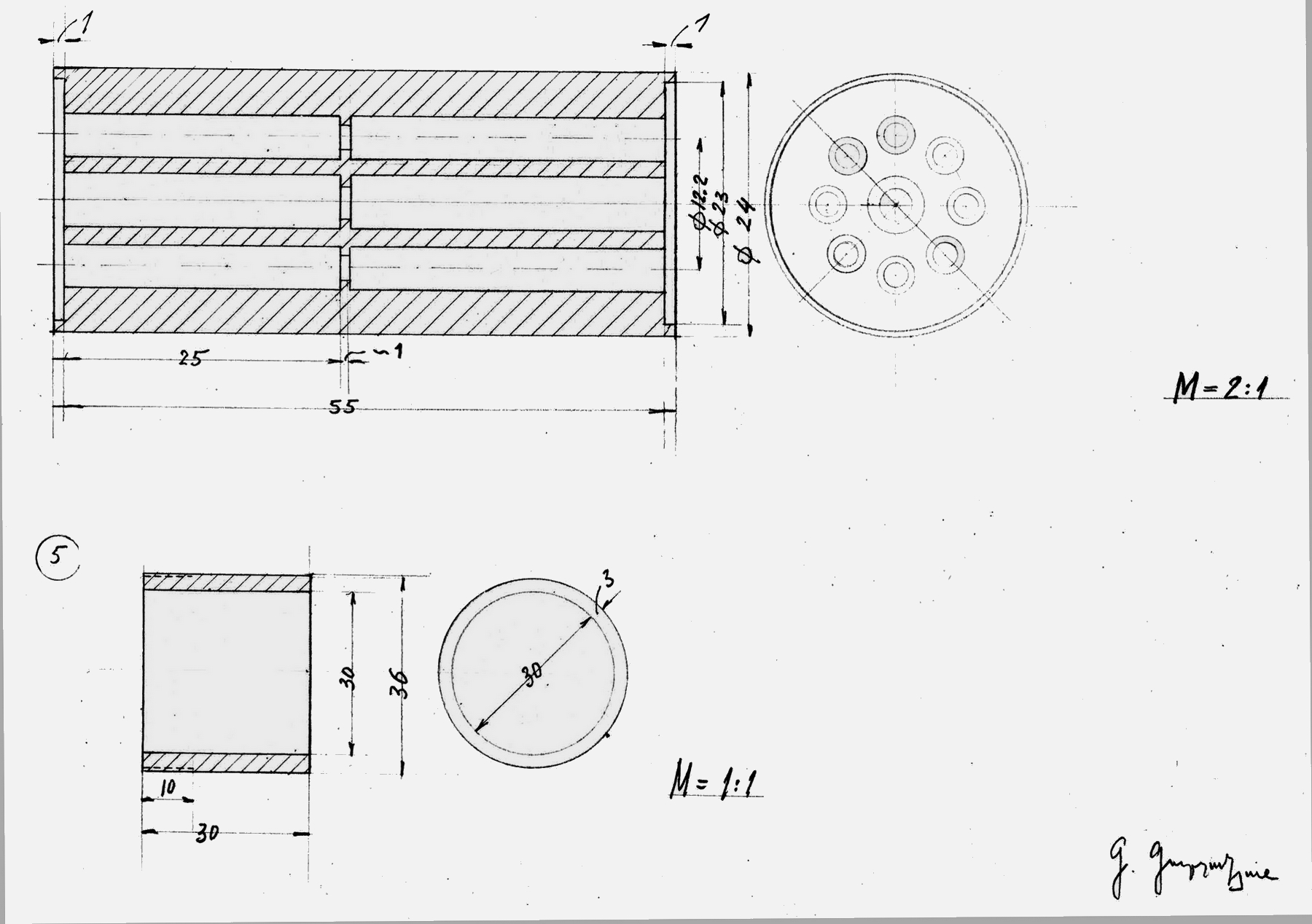 |
 |
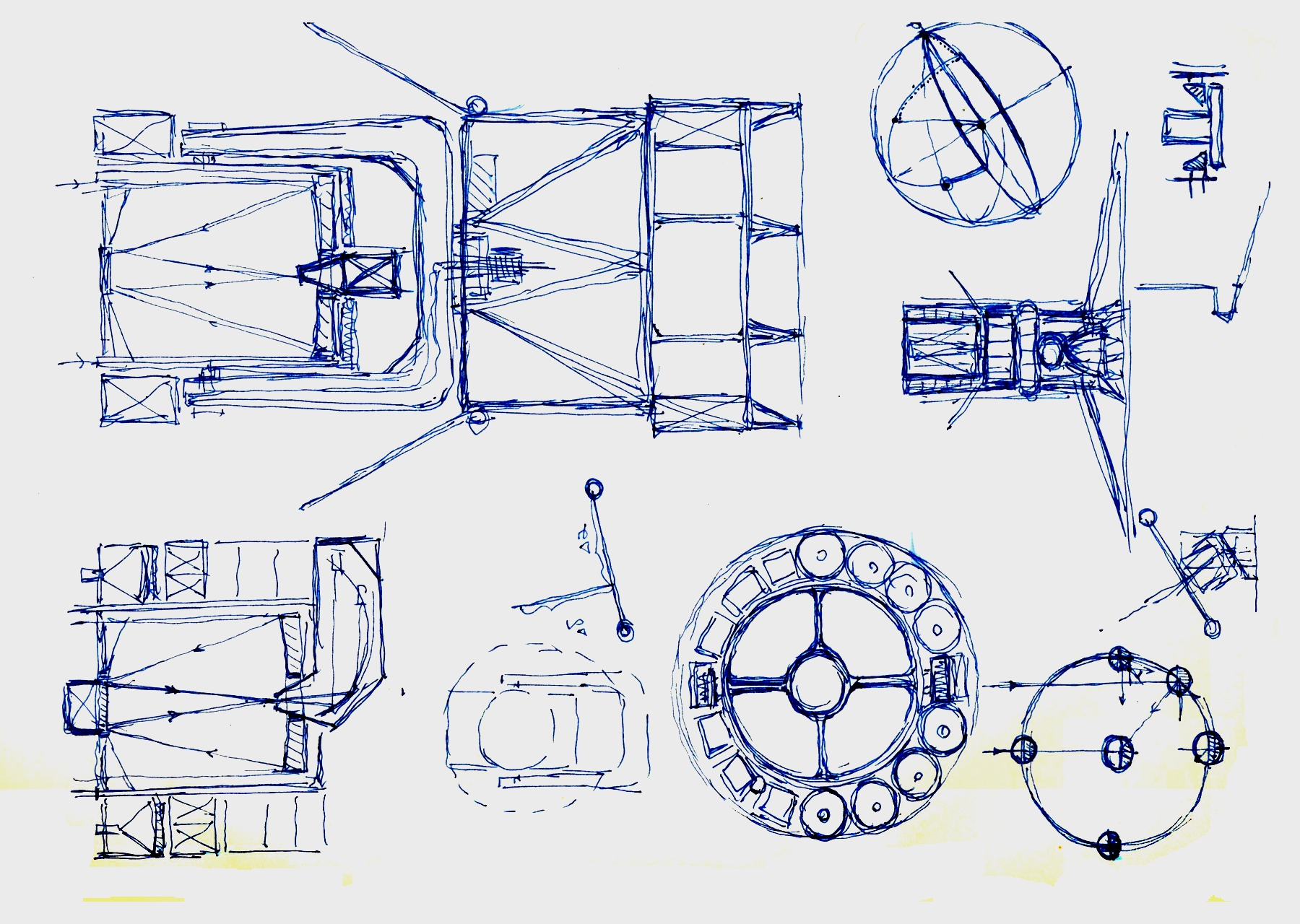 |
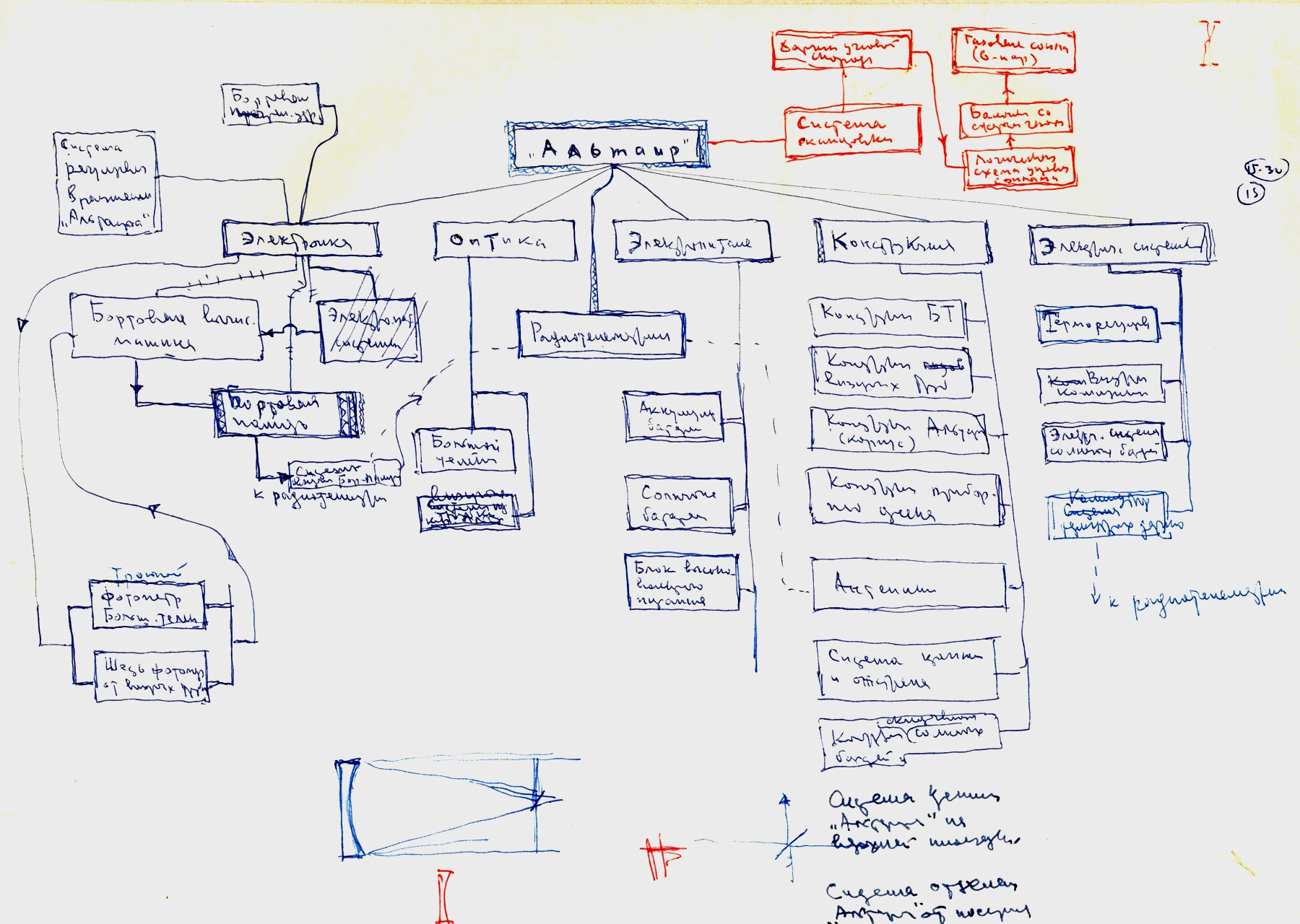 |
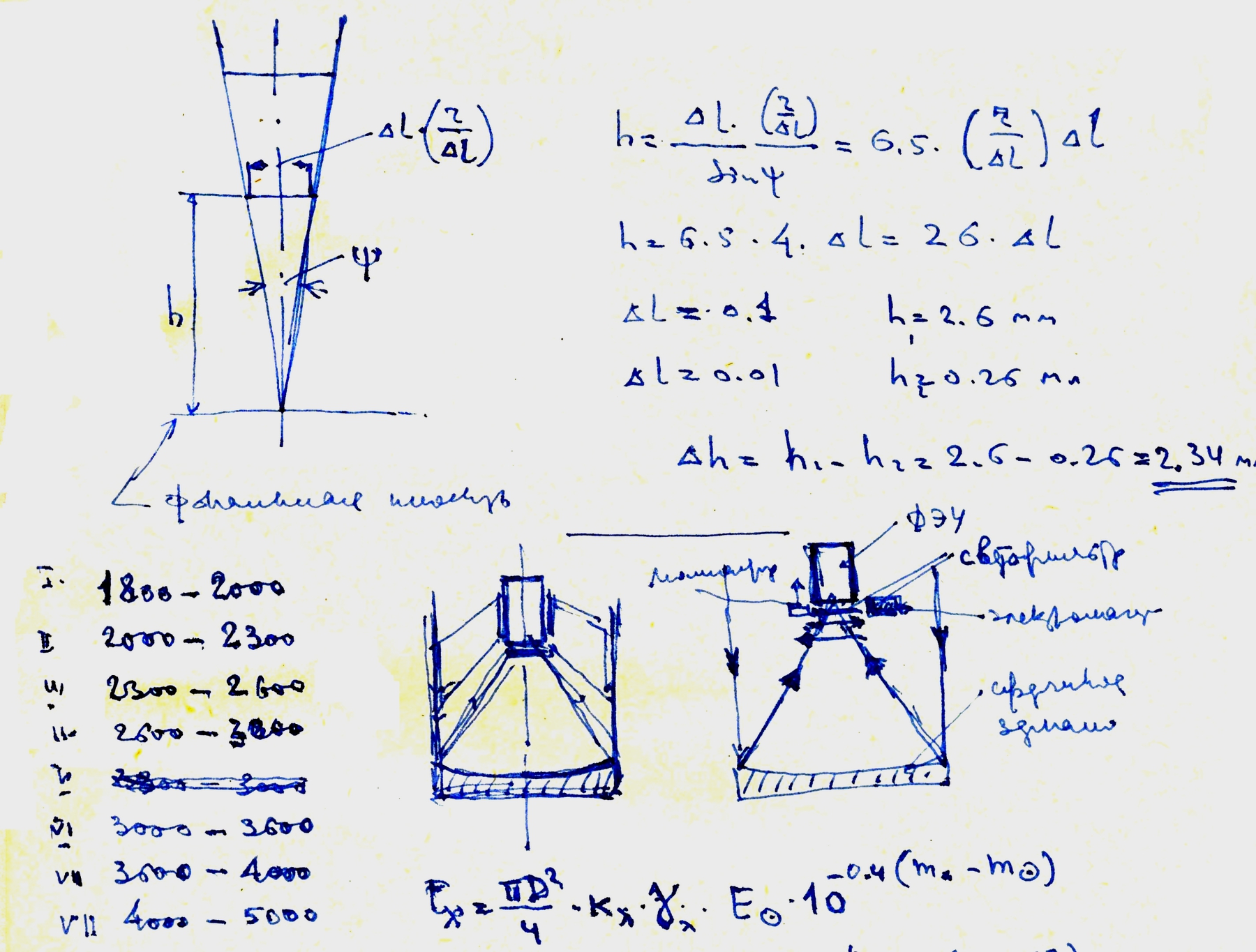 |
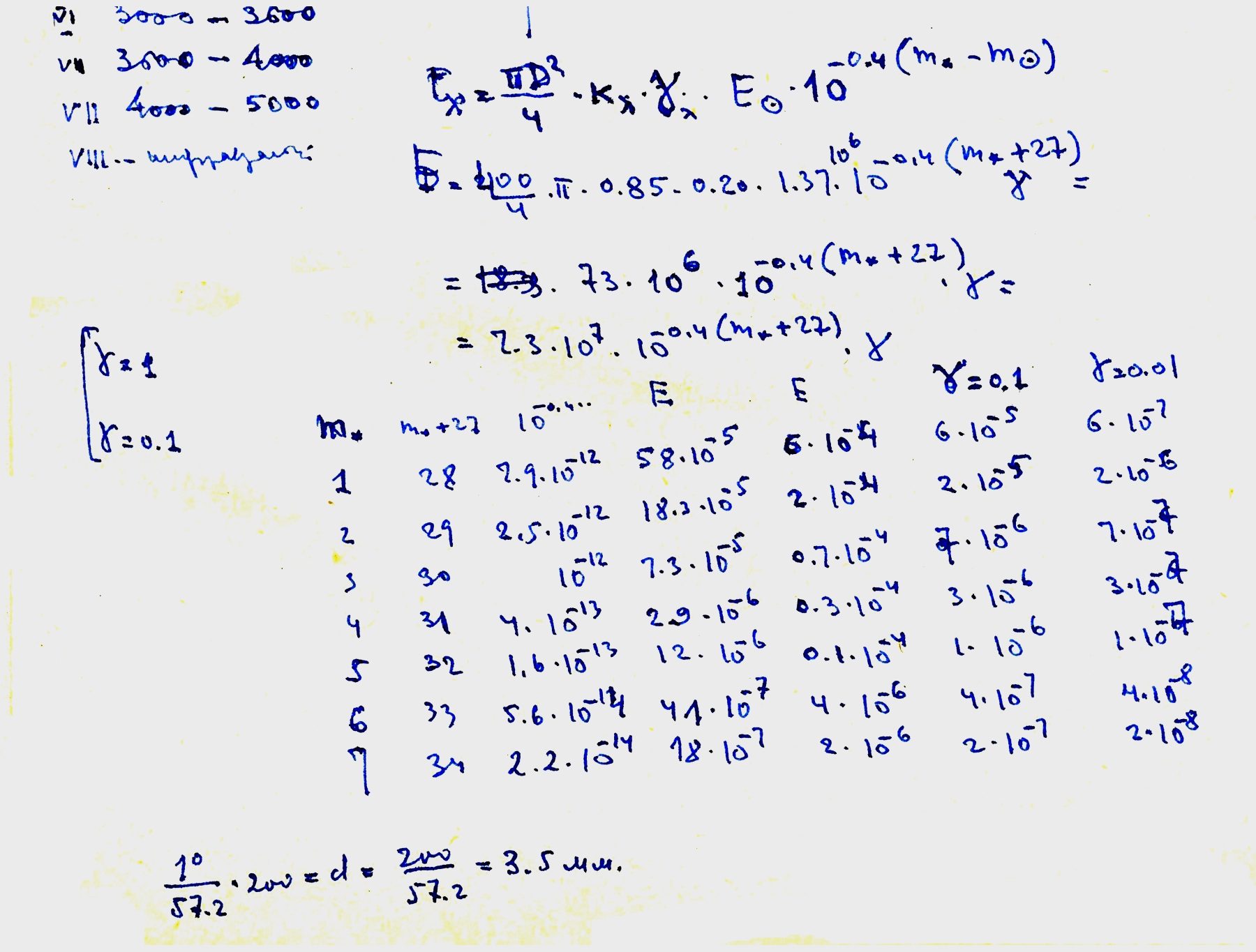 |
The ALTAIR X-ray telescope was installed on the METEOR 1-16 satellite launched on March 5, 1974.
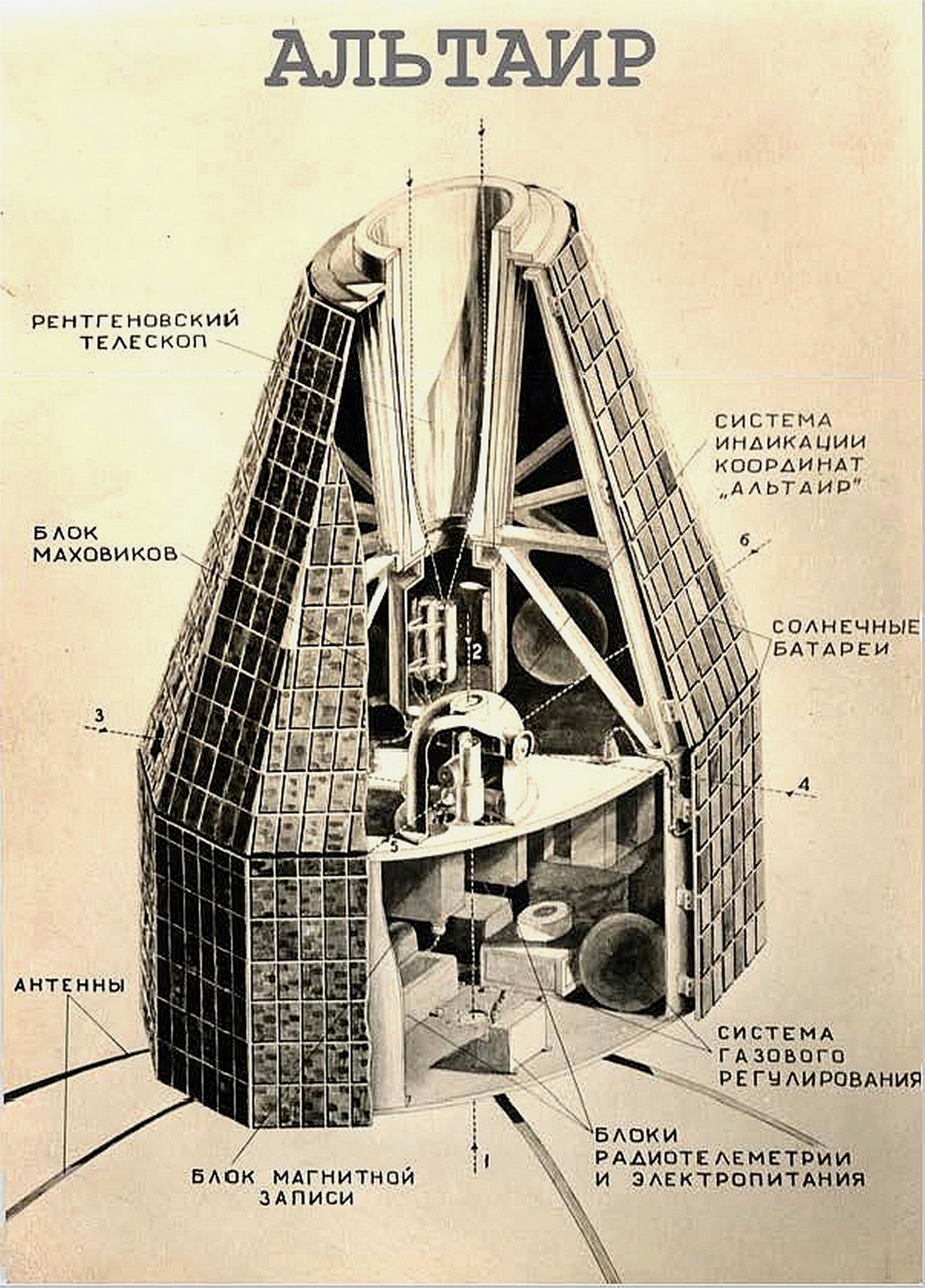
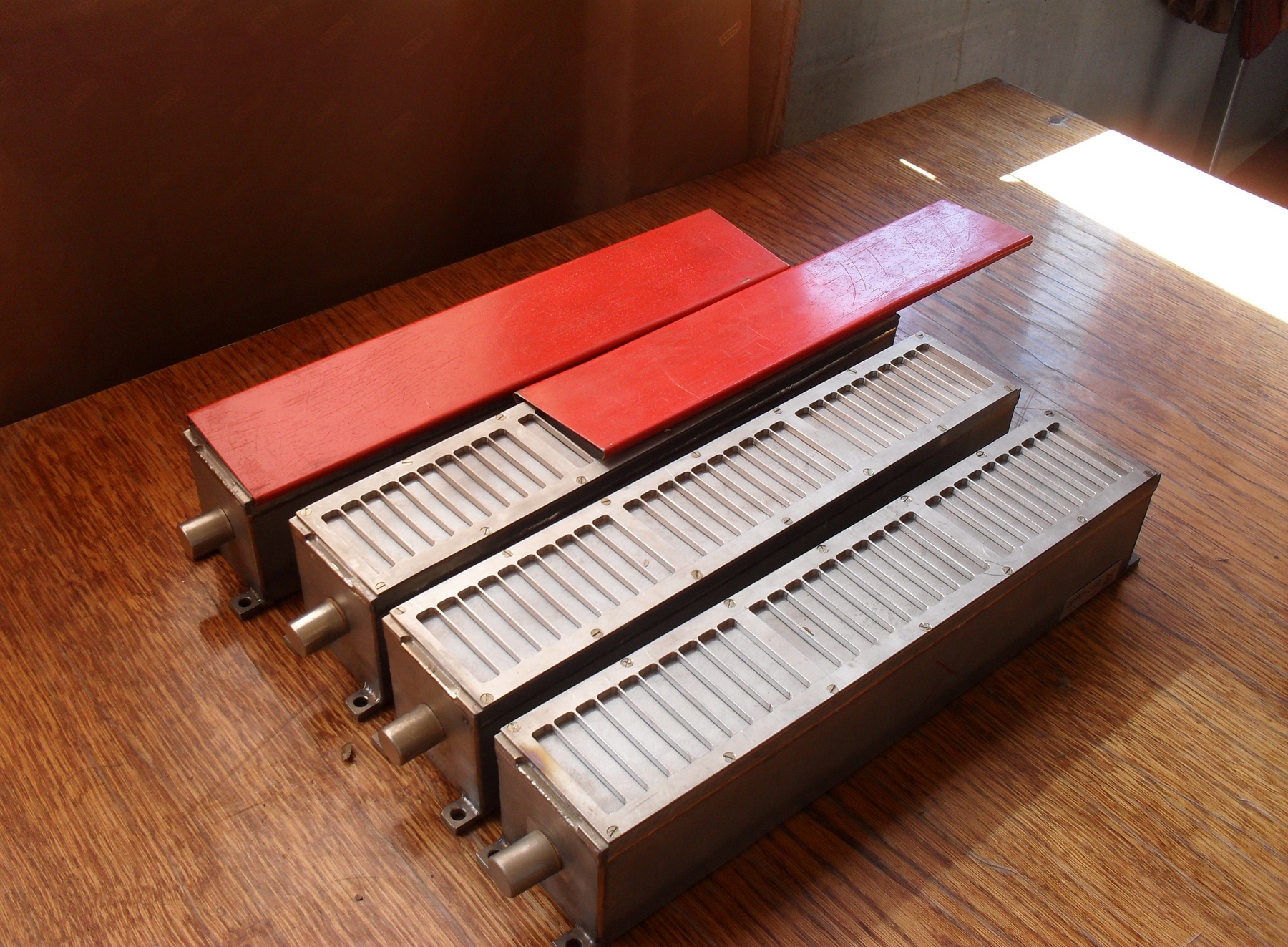 |
 |
| Observatory X-ray counters (without cellular collimators) | Topic presenter Eduard Mnatsakanyan doing calculations, 1972 |
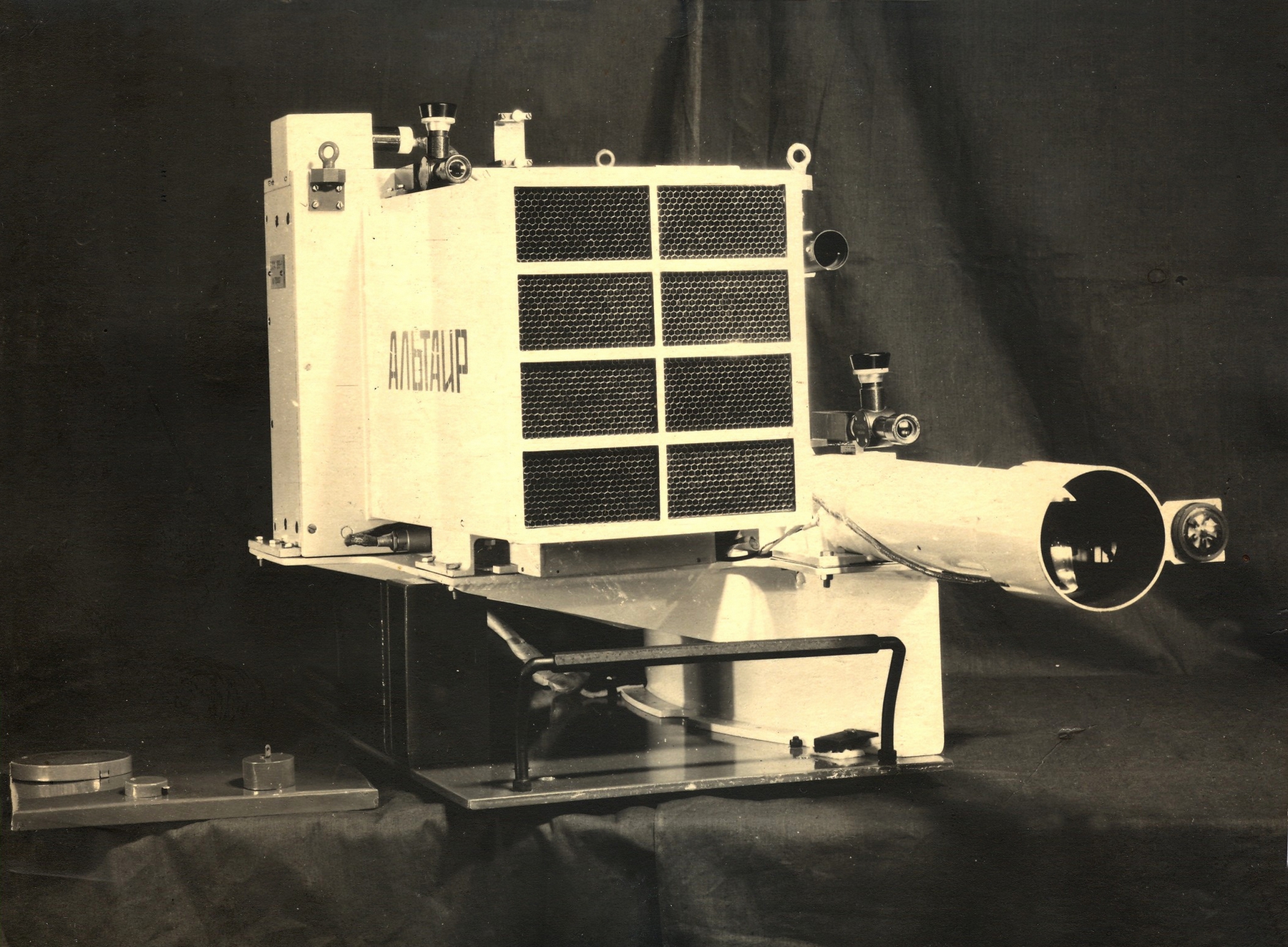
Last Updated on 2025.01.10